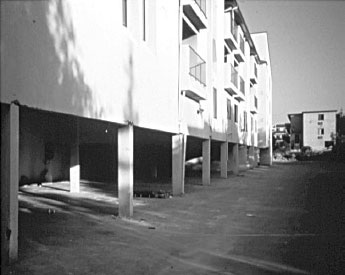A Wise Friend Has Advised Me to Often Get Additional Collateral
A buddy of mine, Paul, owns a hard money commercial mortgage company similar to Blackburne & Sons. He was kind enough to share the following pearls of wisdom:
Paul wrote: "It's been my experience (and I've been around longer than George, although I've been told that I'm younger and better-looking) that when your run-of-the-mill, medium-sized investor gets into trouble, he doesn't sink all at once. He takes a while to drown."
"There's generally some money coming in in dribs and drabs, and the question is, 'What is his motivation to pay us, rather than the other guy? Maybe some money comes in on rents, or maybe he manages to sell one property, etc. It's not just our problem with the debtor. It's just as much us versus the other creditors. The more dear the guaranty or the additional security, the more likely it is that we'll get paid in preference to someone else. AND, I CAN TELL YOU DEFINITIVELY THAT THIS IS THE REALITY, NOT JUST THE THEORY!"
"The vast majority of my deals include either a guaranty and/or additional security (cross-collateralization). Probably half my deals include both. It has saved my (bottom) MANY times. It can be a very effective weapon."
"My convoluted logic: A lender should demand and obtain the type of additional security that provides the borrower with a strong motivation to retain the property. When brokers ask me, "How much additional security do you need?", my answer is, "Enough to make it WALK-PROOF". The borrower cannot walk away from the loan."
"The example I use is - suppose the borrower has $1MM in equity he can pledge in a first mortgage position on something questionable (let's say land in . . . Indiana?), I may or may not be terribly interested. If he could also give me a $750,000 second mortgage on a high-quality apartment building, that could well be more interesting that the $1MM first mortgage on land. And, if he has $500,000 he can put up in third position on his primary residence, he has my undivided attention. Why? Because in a lot of these homes there's a wife with a butcher knife! ... and, she's my best friend. You've just added a whole another element to the motivation factor. We all want to keep our appendages intact.
"(Obtaining a personal guaranty also helps to make a property walk-proof.) The borrower certainly doesn't want his friends and relatives getting a letter from the guarantee holder notifying the guarantor of a default. I could go on and on about guarantys and additional security or both. The laws can differ in different states."
"Just one 'head's-up' that almost all the brokers and the majority of the lawyer's get wrong. Be very careful about additional property being put up by someone who is not the borrower. Don't make them both borrowers by taking the easy way out and having them both sign the note. One is the guarantor, and one is the borrower. Don't make them both borrowers on the note. In California, screwing that up can get you in big trouble. Further, the additional security being put up by the guarantor is not the security for the loan. It's security for the guaranty. One one property, you'll have a note secured by a mortgage. On the other, you'll have a guaranty secured by a mortgage."
Note to self and staff: Get either an outside personal guaranty (not just the owner of the LLC) or additional collateral, or both, on every deal.
Do you need a private money commercial loan? You'll find 150 hard money lenders on C-Loans.com. Is your deal bankable? You'll find 500+ banks on C-Loans.com as well. And C-Loans.com is free!



 When the bubble popped, conduit lenders found that many of their loans were significantly upside down. The borrowers owed far more than the properties were worth.The lenders swore to never let this happen again. The CMBS industry therefore adopted a new financial ratio - the Debt Yield Ratio - to determine the maximum size of their commercial real estate loans.
When the bubble popped, conduit lenders found that many of their loans were significantly upside down. The borrowers owed far more than the properties were worth.The lenders swore to never let this happen again. The CMBS industry therefore adopted a new financial ratio - the Debt Yield Ratio - to determine the maximum size of their commercial real estate loans.
